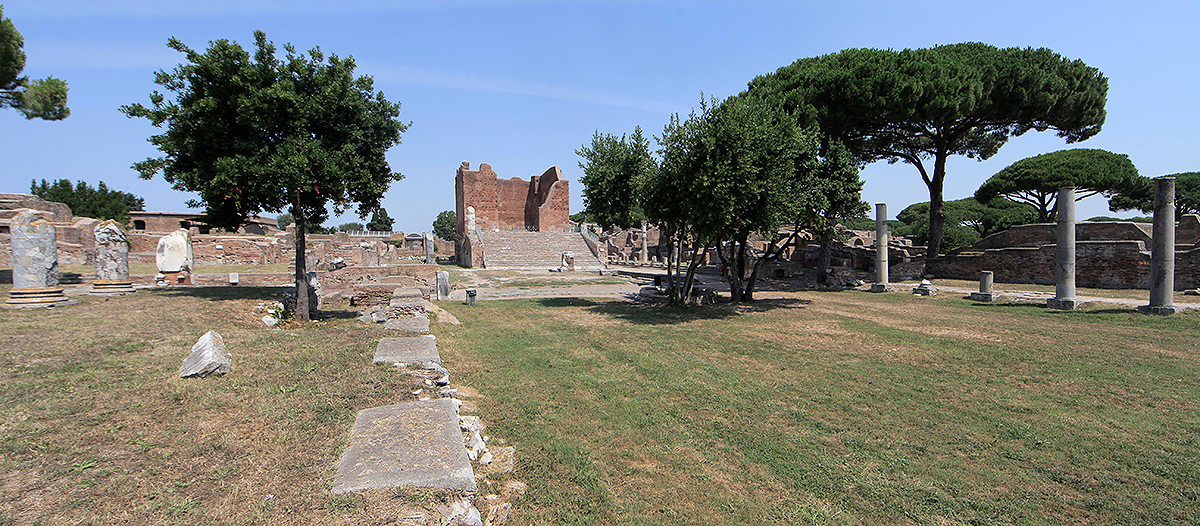
Preface - Gerard Huissen
In the early seventies of the last century, when I met Alberino Vicari 1 for the first time, he told me, walking through the excavations, that for archaeologists it was a very big problem to investigate older historical layers of the city. Digging deeper had consequences for the upper layers, which would be partly or completely destroyed.
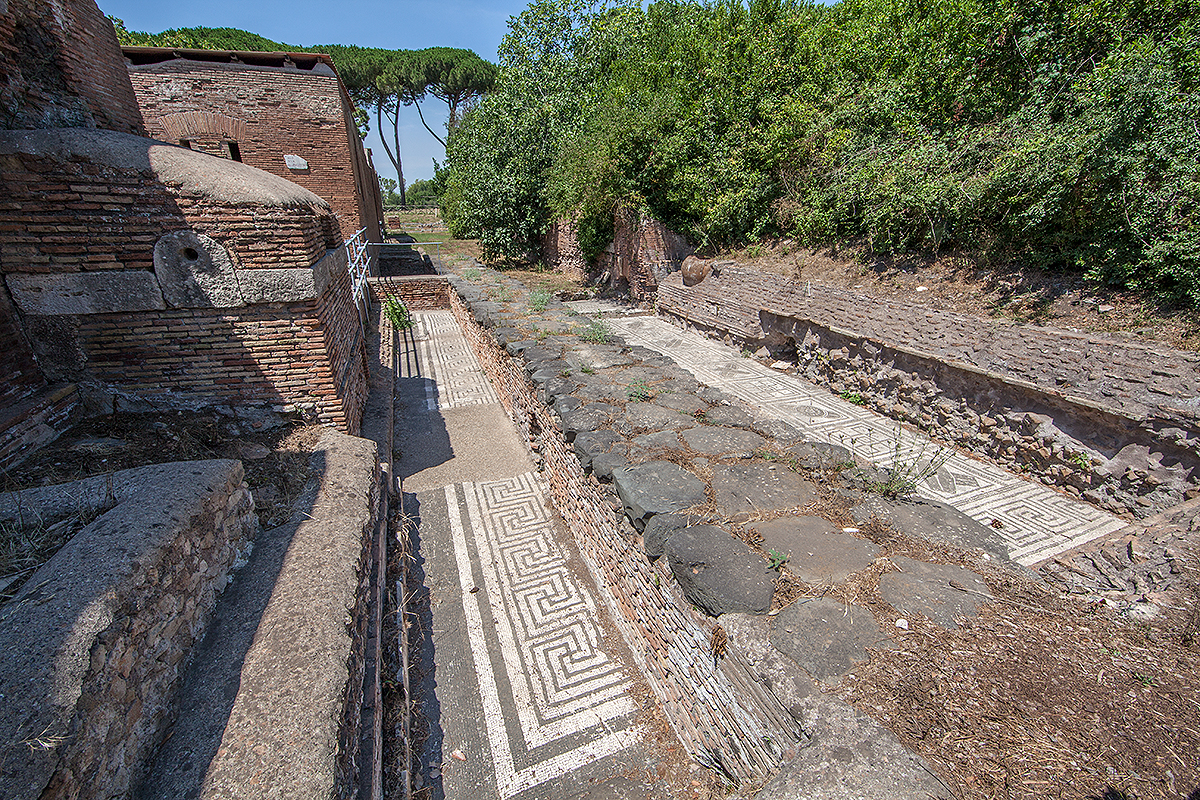
A fine example can be found in the Via della Caserma dei Vigili, where we can see a part of an older mosaic floor, probably from a former bathhouse, one meter below the present street level. A part of the latest antique road had to be removed permanently. For many investigators from the early years of excavation this was not a big problem, because they were not interested in that last episode of antique Ostia, which was according to them characterized by economical and cultural decay. The glorified period from republican and imperial Rome seemed to be more attractive. The early excavators, who dug through the latest street level looking for older layers, also did not make records of what they were doing. As we saw at the Ostia Marina Project 2 today there is much more interest for the declining years of this antique harbour city. A period when written sources of building or renovation activities in Ostia had disappeared almost completely. During the last decades archaeological science has improved enormously. Modern scientists, using the newest techniques, try to reconstruct the original situation of Ostia during her last stage of life. The Ostia Forum Project is such an initiative, symbolising the modern approach of archaeology on an extensive scale, so that we decided to make a series of articles about this project in which all aspects of research, problems, backgrounds, but also the results are covered. Today we start with the first episode.
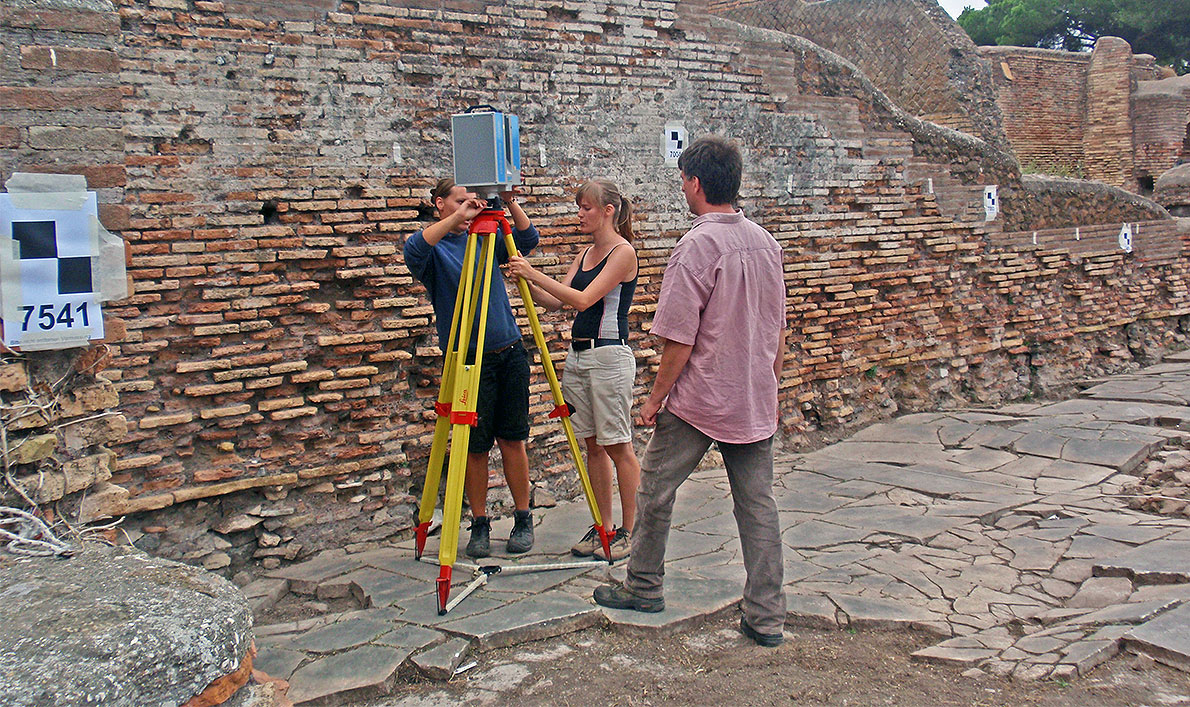
The Ostia Forum Project, part 1: introduction - A report 3 by Daniel Martin Beurze Damgaard 4
The project started as an initiative of the Humboldt University of Berlin and continued in the Kent-Berlin-Ostia excavations, in cooperation with the Superintendency of Rome. The excavation team was extended thanks to students from the Aarhus University, Denmark, under my supervision.
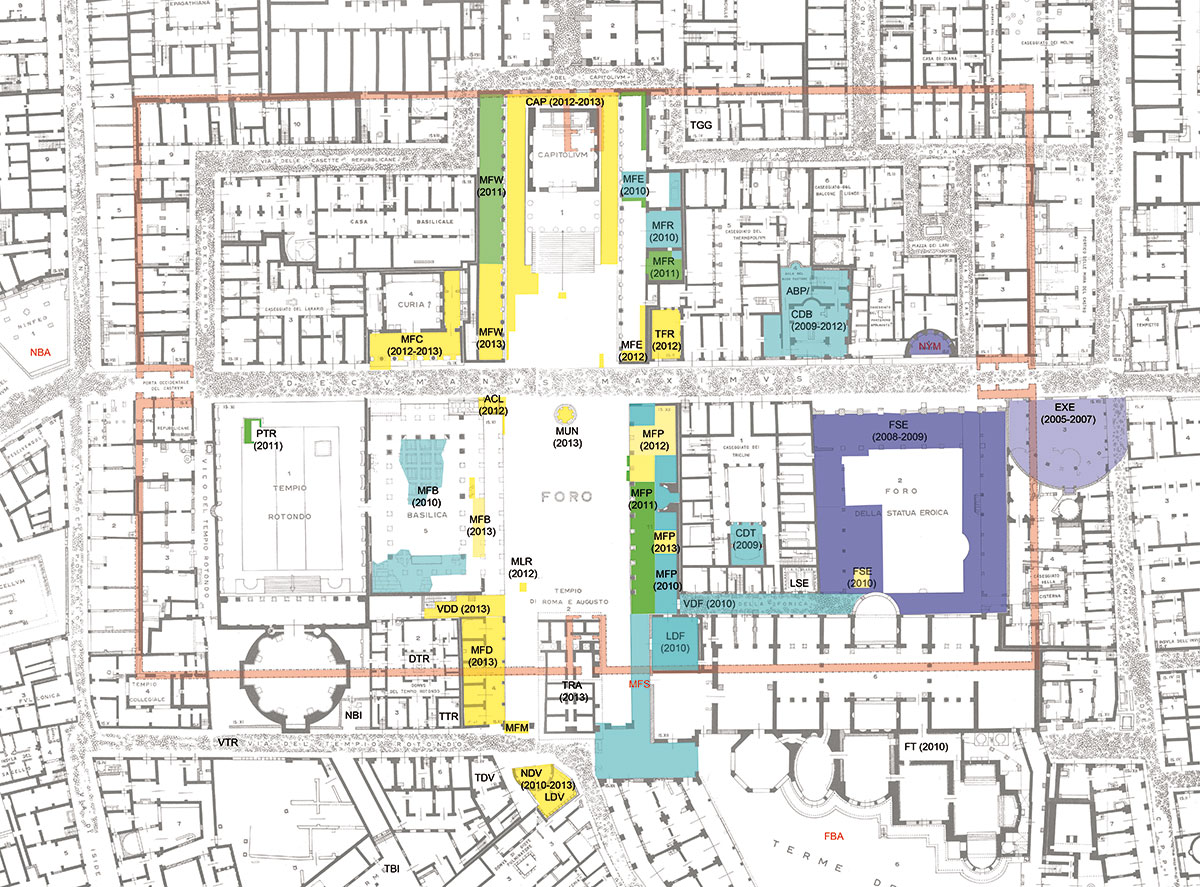
The heart and oldest part of Ostia is the area on and around the Forum (see ‘A harbour for Rome’). This area was the political and administrative centre of the city and it was therefore logical that the excavation and survey projects of the Humboldt University, since 2008, focused on that particular spot, to study Ostia in late Antiquity (4th – 7th century AD), a period during which Ostia is largely unknown.
Before starting the investigators of the project asked themselves the following questions: What happened to the Roman city centre in the late antique period? What happened to the splendid profane and sacred marble buildings, which had already existed for centuries? What was the appearance of Ostia’s cityscape in the 4th century AD and especially in the almost unknown 5th century AD and even later, when written sources of building and renovation activities in Ostia had almost completely disappeared? How long and in what ways was the former administrative and political city centre maintained after earthquakes, ‘barbarian’ raids and the official end of the Roman Empire in the West?
19th century excavations at the Forum and its surroundings
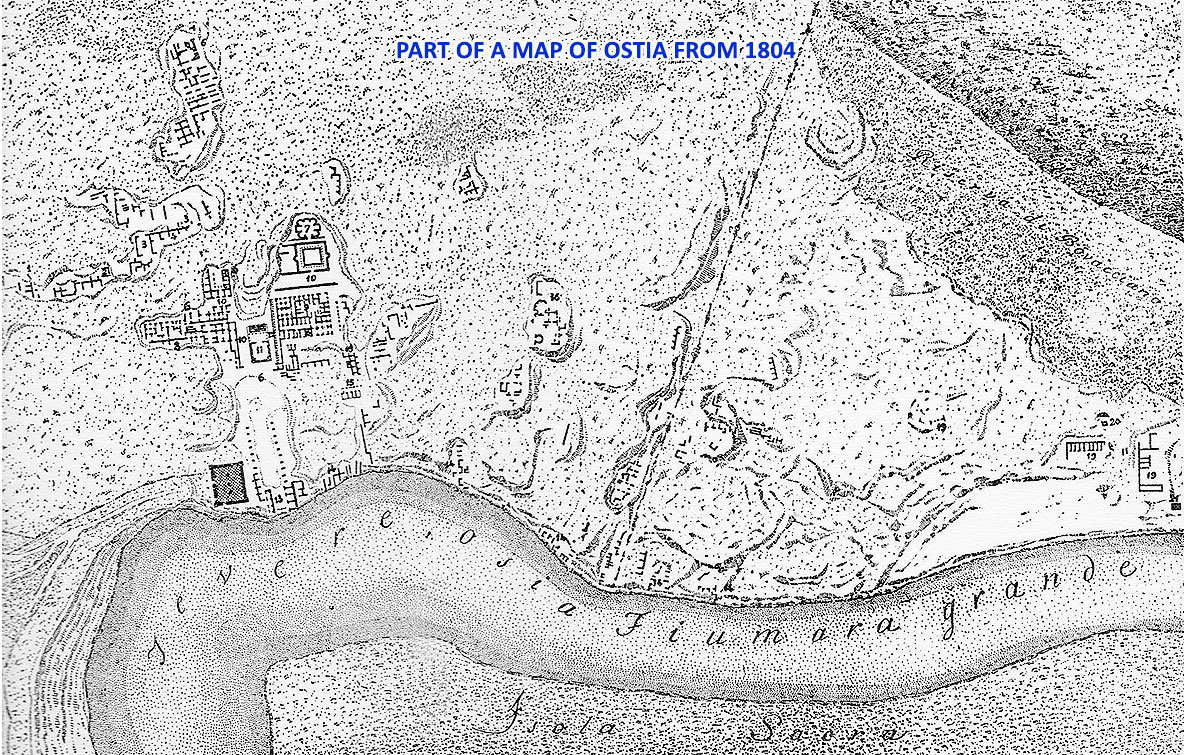
(the temple of Roma and Augustus had not yet been excavated)
The first systematic excavations in Ostia took place under the aegis of pope Pius VII in 1802 5. They were located around the Capitolium, the most important temple of the city, as the uppermost part of its walls “had for centuries been the grave markers of a buried society, propped up above the silt and soil that had accumulated over the remains of the Roman town” 6. Under the direction of Giuseppe Petrini all of the Capitolium emerged from the accumulated earth 7.
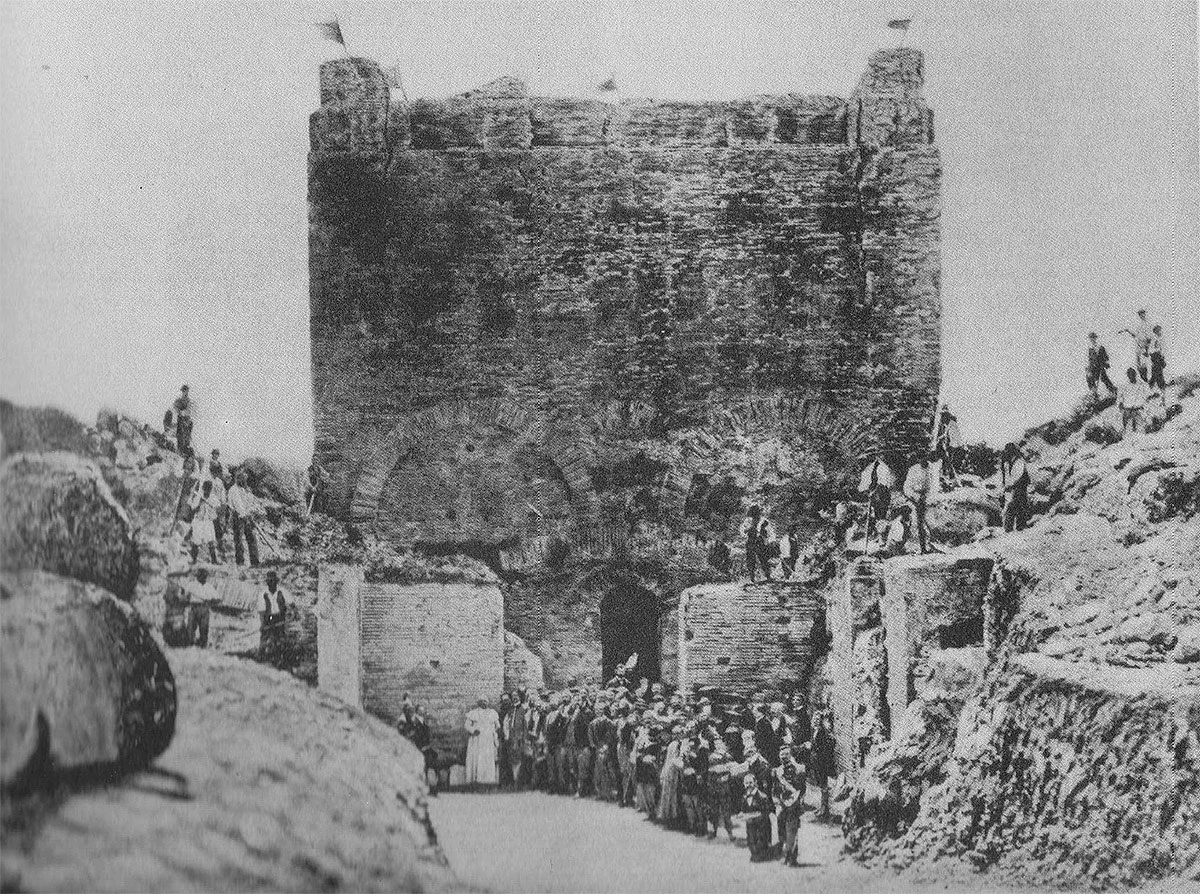
During the period from 1824 to 1834 a number of unsystematic excavations occurred. The excavators focused solely on areas most likely to bring out inscriptions and sculptures, thus paying no attention to architecture 8. Following these phases of excavations, completed areas were backfilled after the items were removed. This can be seen from excavations in 1922, when Raffaele Finelli recognised an area north of the Temple of Roma and Augustus as being backfill 9. In the second half of the 19th century Rodolfo Lanciani organised campaigns east of the Capitolium, thus excavating the area between the Capitolium and the theatre, and stitched together the first urban image of Ostia 10.
Early 20th century research and excavations: Ostia’s first director, Dante Vaglieri
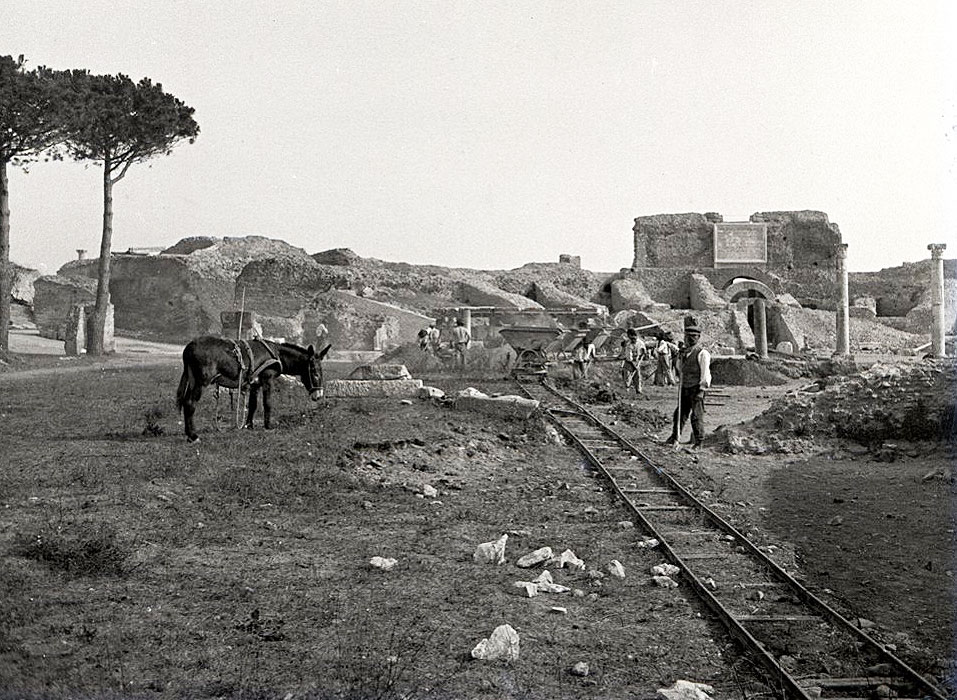
The most significant change within Ostian research occurred in the first half of the 20th century. The excavations conducted in the 19th century searching for precious items preserved the still in situ pavement. When Dante Vaglieri, Ostia's first official excavation director from 1907-13, conducted excavations in the northern part of the Forum, it provided Ostian research with a more systematic approach. Deep trenches in 1912 and from 1921-1924 conducted in search of republican Ostia caused the removal of a big part of the late antique pavement 11.
Changes in excavation policy during the fascist regime
With Guido Calza's discovery of the Temple of Roma and Augustus, the southern part of the Forum was almost completely excavated 12. Notwithstanding new advances in Ostian archaeology, such as stratigraphic excavations, photography, and field recording, no comprehensive publication occurred concerning the Temple of Roma and Augustus. A brief identification, followed by epigraphic and sculptural remains, its phases, and a plan drawn by Italo Gismondi appeared in the series 'Scavi di Ostia' 13.
The discovery of the “aedes Romae et Augusti” took place during the rise of fascism in 1921. The context of the newly excavated Temple of Roma and Augustus ensured a perfect symbol of Rome’s glorious past. In 1923 the inauguration of a railway between Rome and its ancient harbour city made the connection between the two cities easier. This made the restoration and presentation of Ostia to an eager public a first priority 14. The excavation of the Tempio Rotondo area during the late 1920’s was only photographically documented. The only publication so far comes from an English archaeologist visiting the site 15. In 1938 Italy’s fascist regime decided that the ancient city was to be completely excavated and prepared for display during the World Exhibition of 1942 in Rome 16.
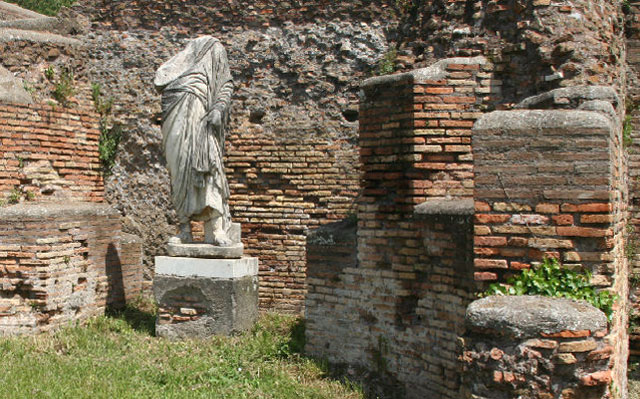
In continuation of Calza’s former excavation work the detailed documentation of finds and stratigraphy played only a minor role. A good example of how finds were manipulated is the completely modern statue base built in the centre of the Forum apse (see picture to the right): the statue was found here, and its base (constructed with ancient bricks in the interior) is not in situ. Another example is the denial of the existence of a late antique pavement by Guido Calza with the words: ”della pavimentazione del Foro non esiste traccia” 17, even though the diary of his assistant Raffaele Finelli and photographs proved the opposite 18. Recent excavations showed that a big part of the marble pavements and facades, as well as representative buildings and monumental plazas, originated from the late antique period.
Restoration as a problem for modern archaeology
Another problem encountered by archaeologists today is the circumstance that the old excavators restored a relatively great quantity of pavement and architecture. At the Foro della Statua Eroica we encountered some problems regarding the differentiation of ancient pavement and modern repairs, due to the use of ancient material in the modern conservation efforts.
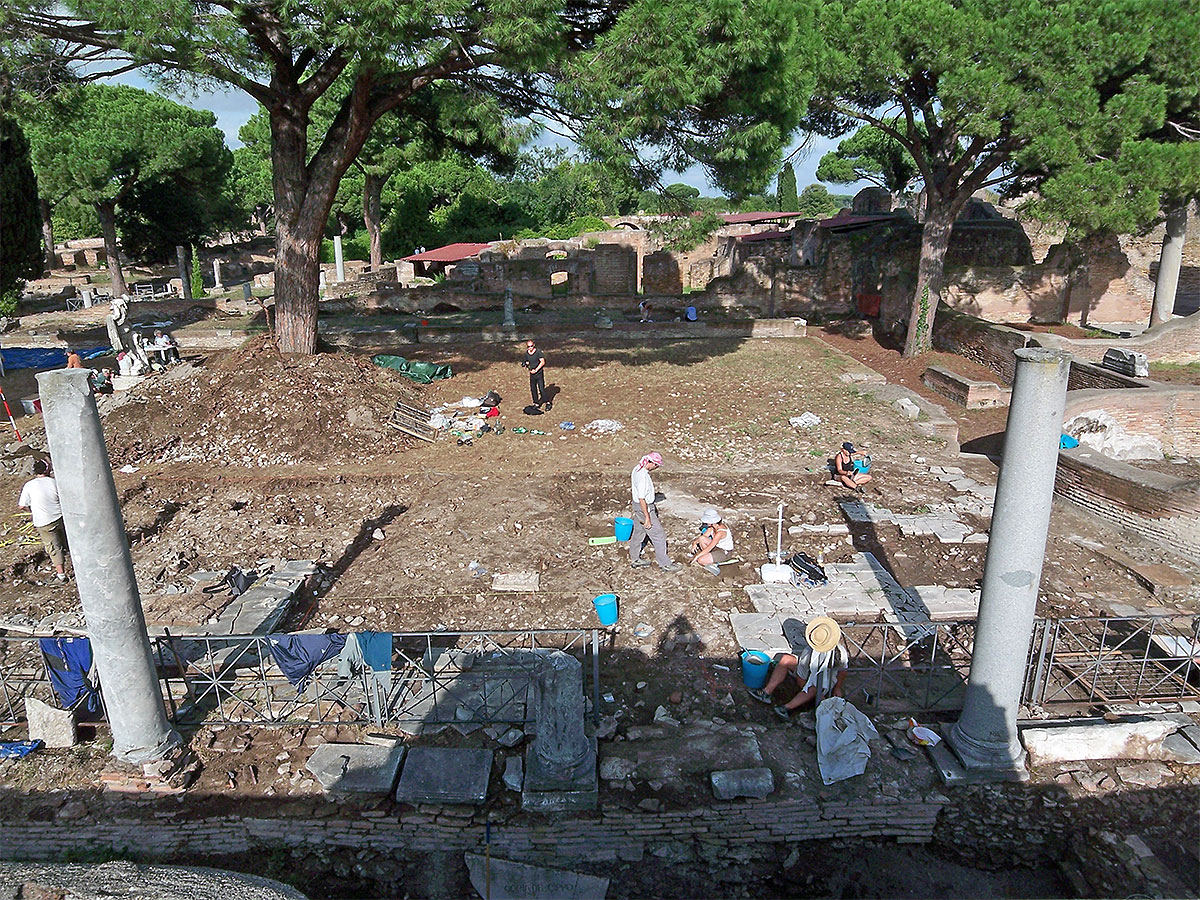
Archaeologists had to analyse context and building circumstances of the slabs individually 19. During the old excavations modern reconstruction work was done throughout the Forum and its surroundings, thus creating a presentable pavement and architecture. A good example of this reconstruction practice is seen at the Decumanus in front of the Foro della Statua Eroica. In 1912-1913 under the direction of Vaglieri different architectural fragments appeared in the bedding of the Decumanus 21. The largest of these fragments were placed on top of modern brick piers in order to provide an image of imperial Ostia. The smaller fragments were stored.
To be continued...
Next time we will tell you how the investigators got the maximum of detailed recording with a minimum of real excavation work.
Notes- 1: Our article 'Alberino Vicarii, Il Biondo'.
- 2: Our article 'The last found Mithras Sanctuary'.
- 3: See the complete report on www.ostiaforumproject.com.
- 4: Daniel is site manager and supervisor of the Danish sub-team, and research assistant of the Ostia Forum Project (see also http://ostiaforumproject.com/daniel-damgaard-ph-d-student).
- 5: Marini 2000, 61-109.
- 6: Boin 2009, 30.
- 7: Fea 1802, 6.
- 8: Meiggs 1973, 106.
- 9: Giornale degli Scavi 18, 1922, 117.
- 10: Lanciani 1888.
- 11: Vaglieri 1912, 273-276; 1913, 299; Calza et al. 1953, pl. 2; Gering 2011, 458.
- 12: Calza et al. 1953, 34-38.
- 13: Calza et al. 1953, 115-122.
- 14: Calandra 2000, 439-440.
- 15: Briggs 1930. There is also a thorough analysis of the temple in Rieger 2004.
- 16: Meiggs 1973, 109-110.
- 17: “Of the floors of the forum no traces have been found”, Calza 1928, 160,
- 18: Calza 1928, fig 55. According to Finelli’s journals the late antique pavement lay 50-75 cm above the present level.
- 19: Gering 2011, 431-435.
- 20: Photo: www.ostia-antica.org.
- 21: Vaglieri 1913, 299-303.






 We are committed to providing versions of our articles and interviews in several languages, but our first language is English.
We are committed to providing versions of our articles and interviews in several languages, but our first language is English.